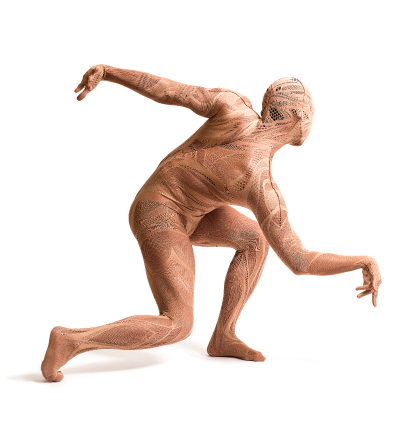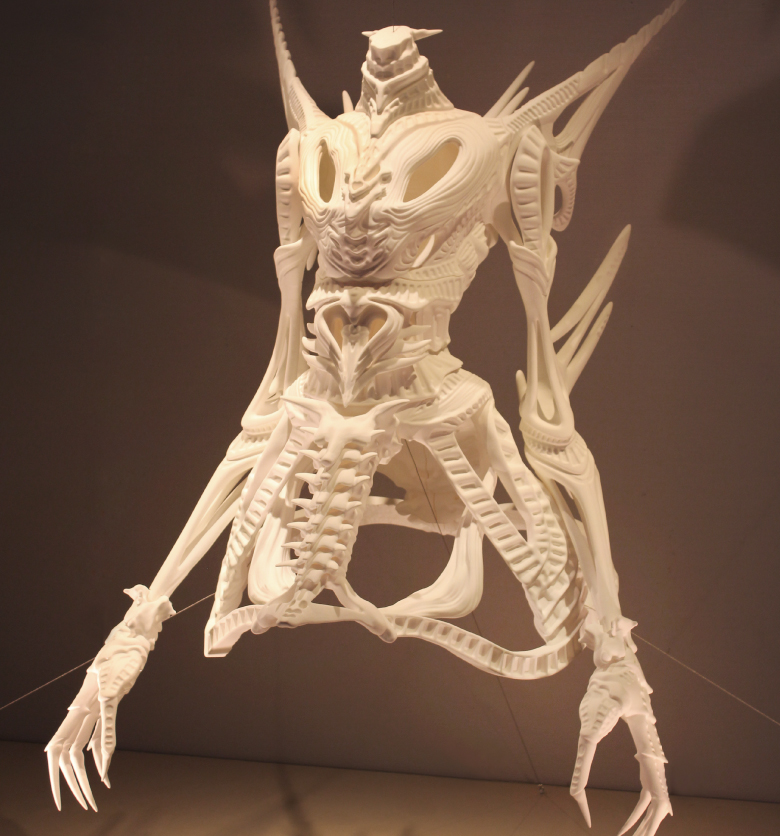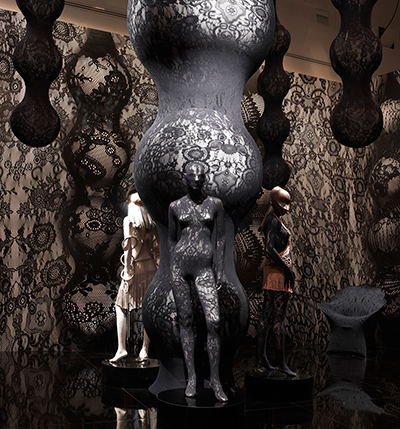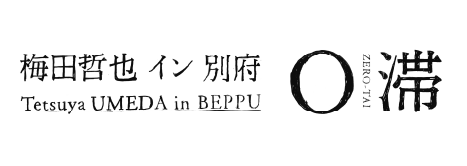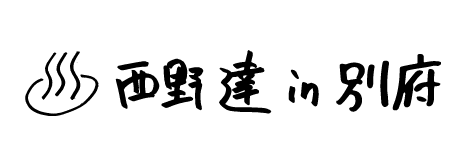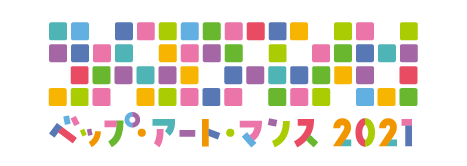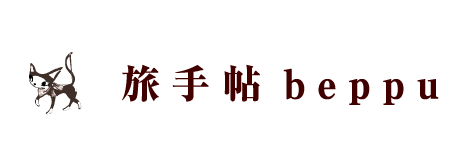ABOUT


The city of Beppu in Japan’s Oita Prefecture, famous for its “onsen” or hot spring baths, hosts an arts festival once a year called “in BEPPU”. The festival culminates in a solo exhibition by an artist who has been invited to Beppu to develop an art project inspired by their surroundings. For this year, the 6th annual “in BEPPU”, we welcome fashion designer Tamae Hirokawa.
In a time when our day to day lives have been altered dramatically and it is impossible to see what lies ahead, what is most needed? In thinking on this question, Tamae Hirokawa landed on a theme: matsuri, or festival. In Japan, matsuri are a time when we give thanks for the gifts of nature, and pray for a bountiful and peaceful future. Now, perhaps matsuri can help us find the strength to survive, and meet the challenges of today such as the pandemic, natural disasters, and climate change. This time, this place, these people… together with the citizens of Beppu, a new matsuri will be created to connect these pieces of now to the future.
-
Period:
Sat, December 18, 2021 – Sun, February 13, 2022
*Closed on Tuesdays, December 28 – January 6, 2022 -
Venues:
Various Locations in Beppu & Online -
Official Web site:
https://inbeppu.com -
Venue composition & Graphic design:
Takeshi Fukui (SOMA DESIGN) -
Technical direction:
Yutaka Endo (LUFTZUG) -
Act & Choreography:
Ema Yuasa, Daisuke Omiya -
Organizer:
Mixed Bathing World Executive Committee -
Producer:
Jun’ya Yamaide (NPO BEPPU PROJECT) -
Participated BEPPU ART MONTH 2021
INFORMATION CENTER
-
[TAMAE HIROKAWA in BEPPU]
-
[BEPPU ART MONTH 2021]
-
Venue:
JR BEPPU Station (12-13, Ekimae-cho, Beppu-shi, Oita pref.) -
Open:
10:00-17:30

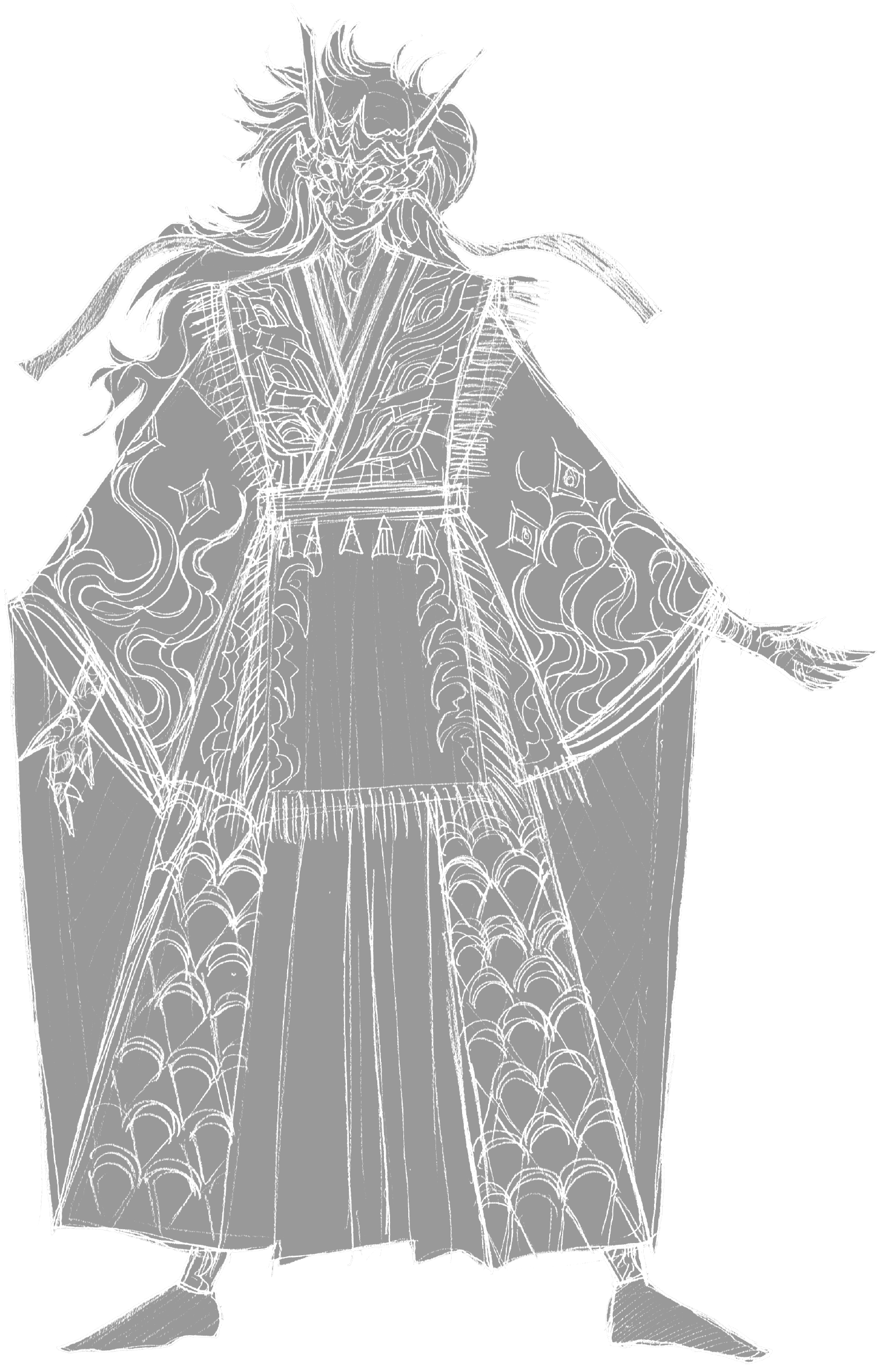
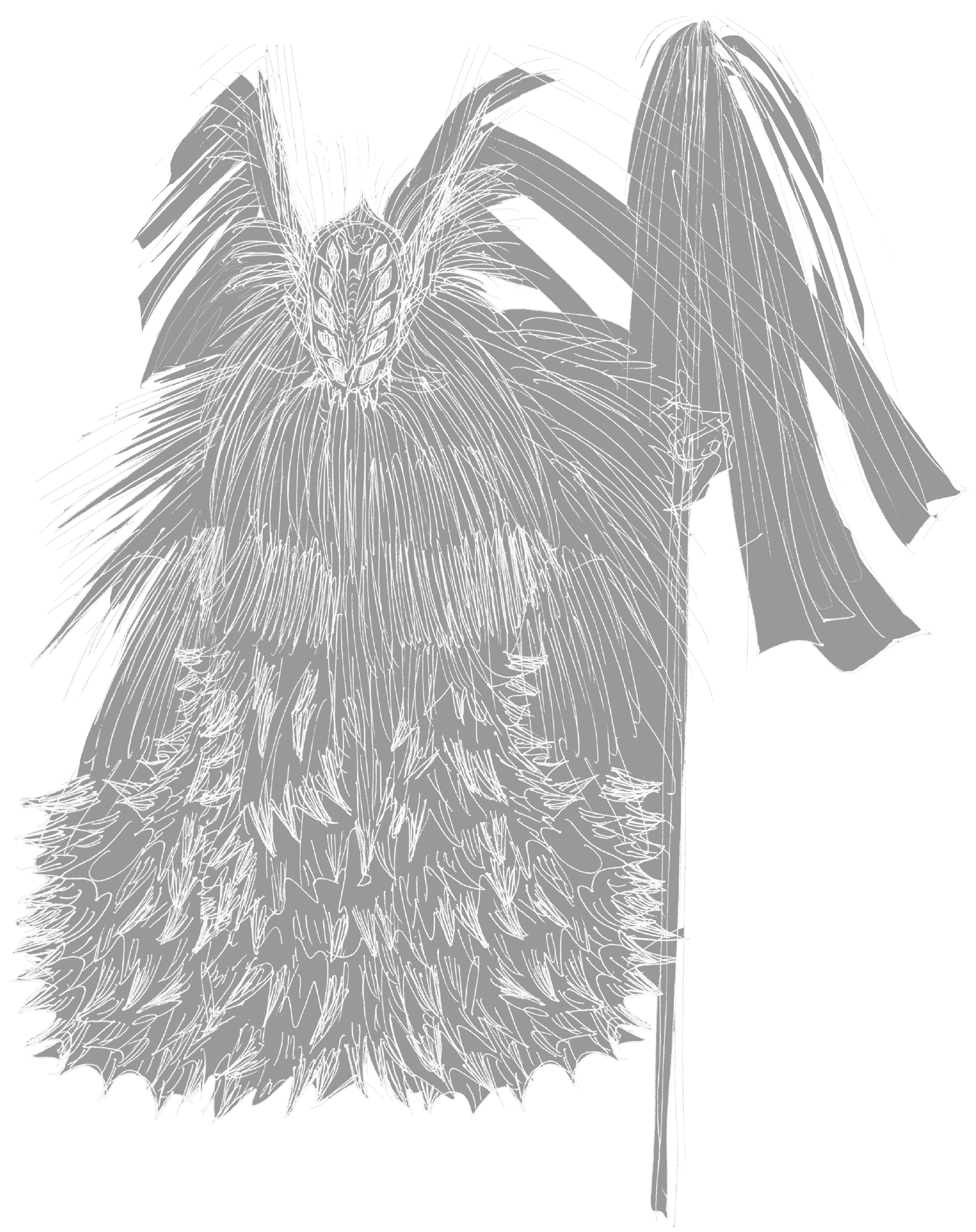
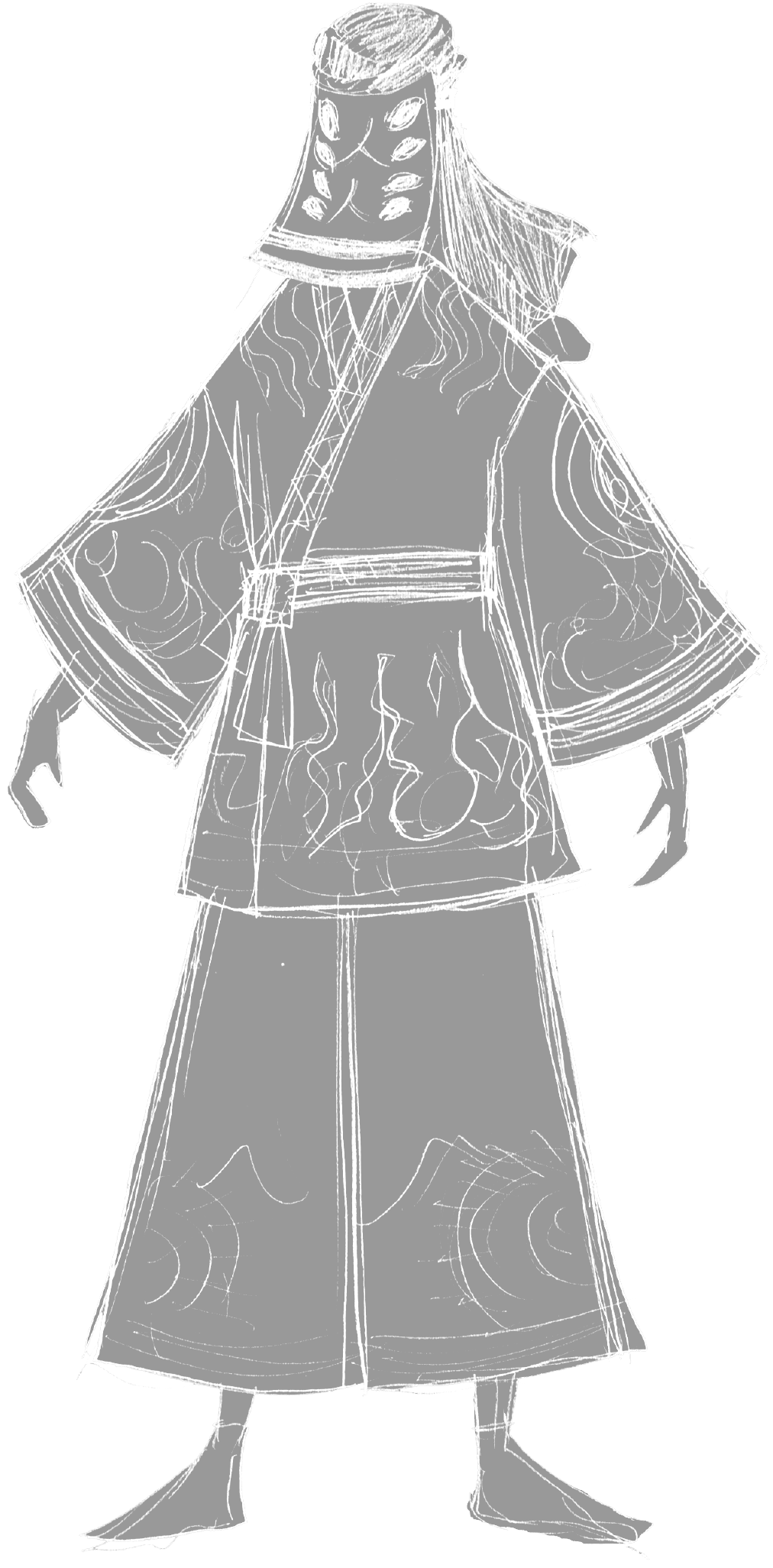
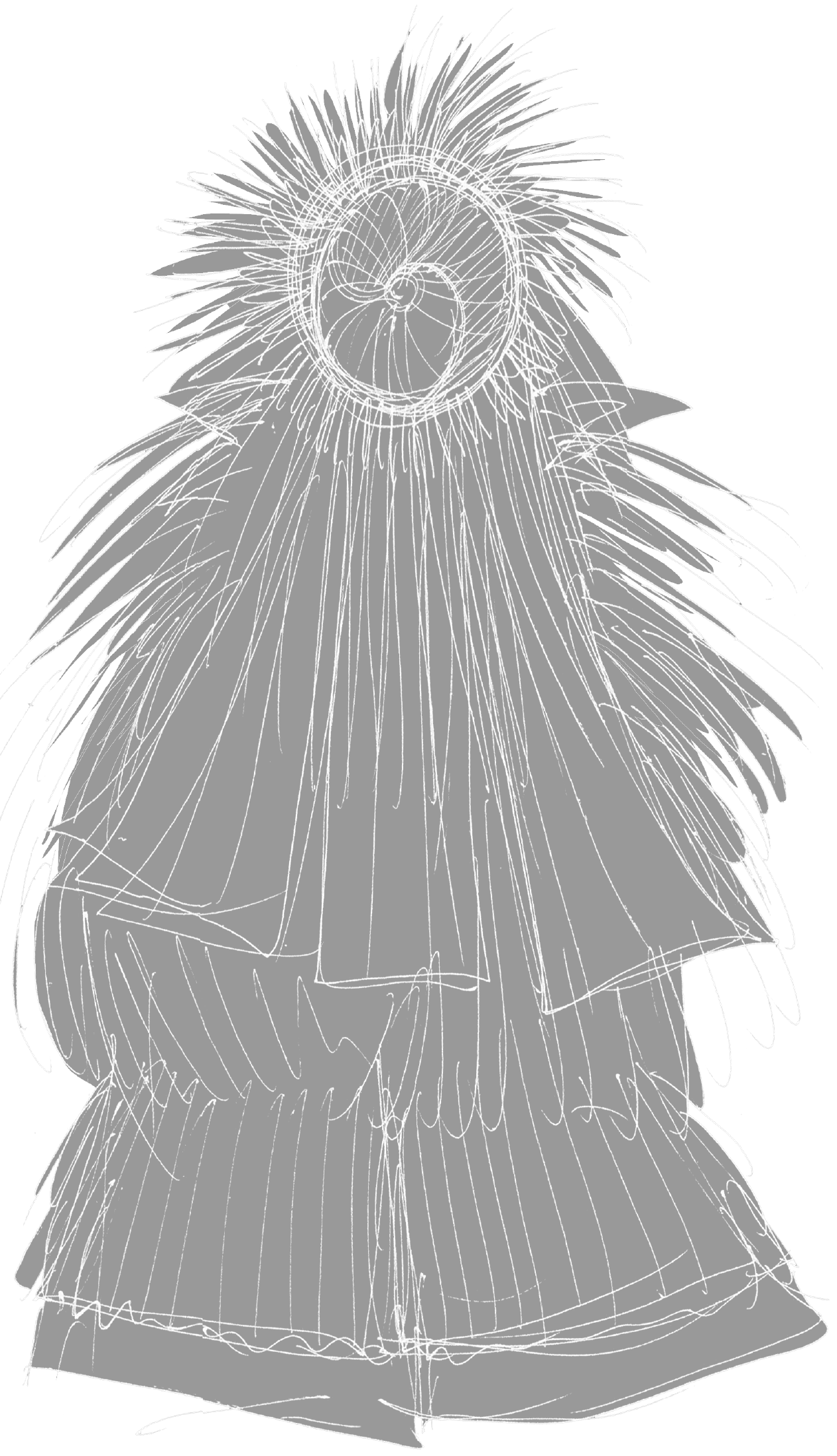
OUTLINE
The hot springs, or onsen, of Beppu are both an abundant resource and a symbol of the city’s energy. Views, which the locals call jigoku, of hot steam and boiling water spurting up from the ground are everywhere you look. This gift from nature pervades the entire city, shaping the history, culture, economy, and the lifestyles of the people of Beppu. We pray to the gods of heaven and earth for a bountiful harvest, and give thanks to the energy of nature which grants healing to all things, brings about death and rebirth, and leads the cycle of day to day existence. The custom of worshiping nature, which has been passed down by our ancestors since antiquity, is called matsuri, and it is the origin of humanity’s creation of art. With TAMAE HIROKAWA in BEPPU, we will create a new matsuri which will take place mainly in the Kannawa onsen district. Like the underground hot springs which cycle between the mountains and the sea, this matsuri will unfold through three rituals — mountain, city, and sea — giving thanks to the blessings of the jigoku and onsen, and praying for a bountiful future.
[Mountain] TSUINASHIKI-SHINJI-HONOUVideo Installation
On Screen:
Sat, December 11, 2021 available from 10:00-view video
Cast:
Ema Yuasa, Shinto priest of HONOO HONOME Shrine BEPPU, Beppu Hamawaki Children Drums Group
Filming Location:
Mt.Garandake
-
[Machi] Parmanent exhibitionInstallation
Period:
Sat, December 18, 2021 – Sun, February 13, 2022Venue:
Various Locations in BeppuOpen:
Follow the usage time of the facility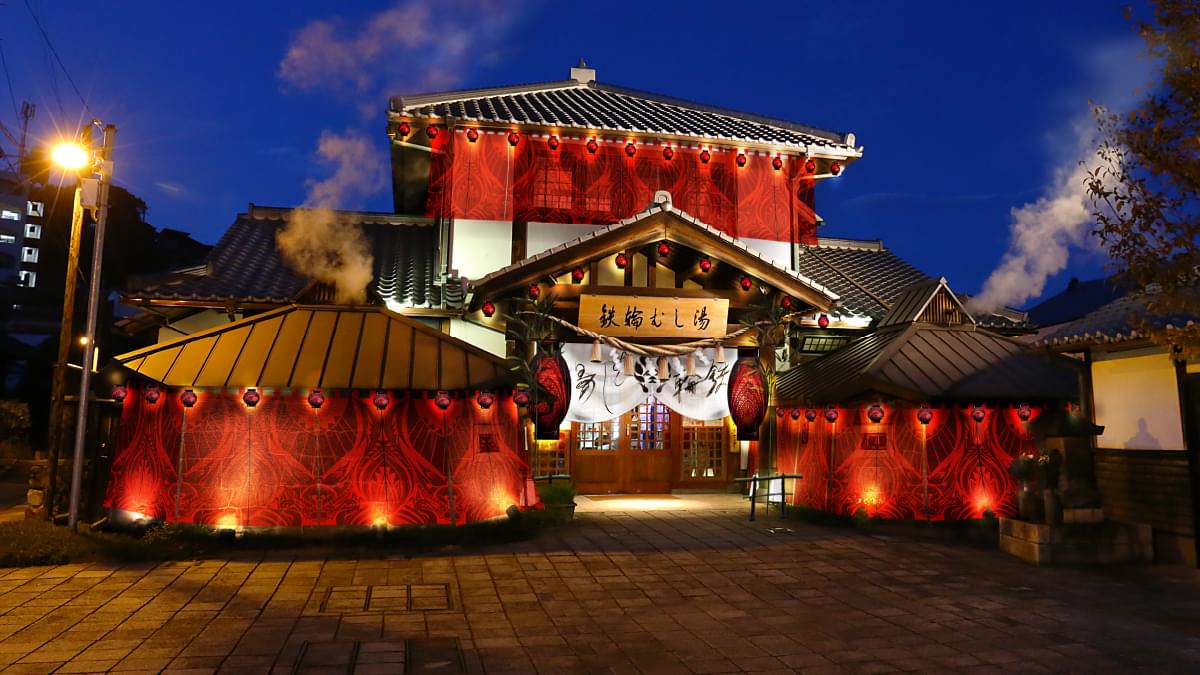
-
Kannawa MushiyuInstallation
Open:
Follow the usage time of the facilityLocation:
1kumi, Kannawa-ue, Beppu-shi, Oita pref. -
Jigoku Mushi Kobo KannawaInstallation
Open:
Follow the usage time of the facilityLocation:
5kumi, Furomoto, Beppu-shi, Oita pref. -
Sentakuba-atoVideo Installation
Open:
10:00-19:00Location:
1kumi, Ida, Beppu-shi, Oita pref. -
HONOO HONOME Shrine BEPPUCostume Exhibition
Open:
10:00-16:00Location:
8-1, Honome, Beppu-shi, Oita pref. -
Otani-koenCostume Exhibition
Open:
10:00-19:00Location:
2kumi, Miyuki, Beppu-shi, Oita pref.
-
-
[Machi] JIGOKUMATSURI-SHINJI-HONOUProcession of JIGOKUMATSURI
Date:
Sat, December 18, 2021view videoCast:
Ema Yuasa, Daisuke Omiya, Shinto priest of HONOO HONOME Shrine BEPPU, Citizens of BeppuVenue:
Kannawa area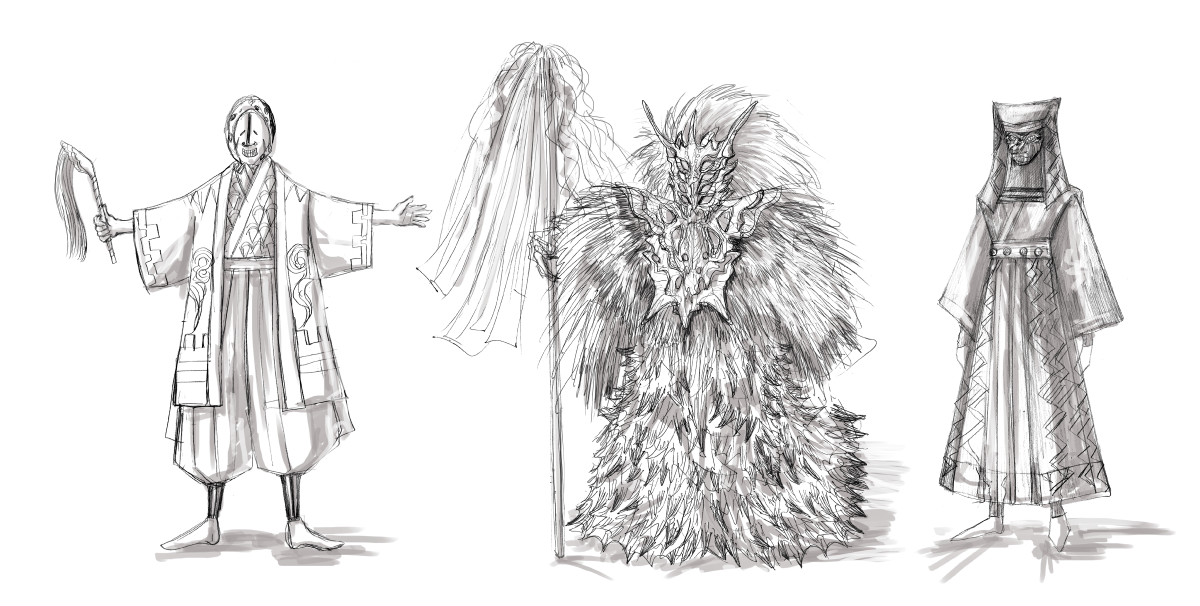
TALK EVENT
Date:
Sun, December 19, 2021view video
1st:
Tamae Hirokawa x Naoki Ishikawa (Photographer)
2nd:
Tamae Hirokawa x Nobuko Nakano (Brain Scientist)
Moderater:
Nobuyuki Hayashi (Columnist)
Venue:
Kannawa area
[Umi] HONOMATSURI-SHINJI-HONOUVideo Installation
On Screen:
Sun, February 13, 2022 available from 10:00-view video
Cast:
Ema Yuasa, Beppu Hamawaki Children Drums Group
Filming Location:
Shoningahama Beach
ACCESS
ACCESS
Accessing JR Beppu Station from other prefectures
-
[ By airplane ]
Oita Airport
Airports providing service to Oita: Tokyo (Haneda), Tokyo (Narita), Osaka (Itami), Nagoya (Chubu)
Take the airport bus to reach JR Beppu Station from Oita Airport.
Take the airport limited express bus Airliner and get off at Beppu Kitahama, then walk to JR Beppu Station (about 7 minutes). Bus travel time is about 50 minutes. -
[ By train ]
Take the JR line and get off at JR Beppu Station
-
[ By car ]
Roughly 20 minutes from the expressway Beppu Interchange
-
[ By bus ]
From outside Oita Prefecture, take a highway bus or limited express bus and get off at Beppu Kitahama, then walk to JR Beppu Station (about 7 minutes).
-
[ By ferry ]
Disembark at Beppu International Tourism Port, and travel by car to JR Beppu Station (roughly 10 minutes).
-
Accessing Kannawa Onsen District from JR Beppu Station
[ By car ]
Roughly 10 minutes from the Beppu Interchange
Roughly 15 minutes from JR Beppu Station
Roughly 10 minutes from the Beppu International Tourism Port -
[ By bus ]
Kamenoi Bus
Take the route number 1, 2, 5, 7, or 41 bus from the JR Beppu Station west gate and get off at Kannawa (travel time roughly 20 minutes).
Take the route number 15, 16, 17, 20, 24, or 26 bus from the JR Beppu Station east gate and get off at Kannawa (travel time roughly 20-40 minutes).
Oita Kotsu
Take the route number 60 or 61 bus from the JR Beppu Station east gate and get off at Kannawa Onsen (travel time roughly 25 minutes).
*Please check online for detailed travel information.
ARTIST

Established SOMA DESIGN, a company that handles fashion, graphic, sound and visual design. At the same time, launched the brand SOMARTA and participated in the Tokyo Collection. Received 25th Mainichi Fashion Grand Prix New Face Award and Shiseido Encouragement Award. She held her solo exhibition: Tamae Hirokawa - Body Genealogy, and also had many collaborations such as NEOREAL with Canon, iQ X SOMARTA MICROCOSMOS with TOYOTA and 02Gen-Taurs with YAMAHA MOTOR DESIGN. In 2017, SOMARTA’s signature item, Skin Series, was acquired by Museum of Modern Art. Winner of WIRED Audi INNOVATION AWARD 2018.
-
Skin series ATLAS 2018
-
ASURA 2015
-
Skin & Bone chair 2008
-
The Secret Garden 2008
INTERVIEW
-
With fashion design at the center, you have worked in a wide range of design fields, but this is your first time stepping into site-specific work and conceiving your design through the lens of a certain location, is it not?
Tamae Hirokawa:Yes, it is. Typically in my work, I consciously try to see the true substance of the project, and, based on that, produce a result that is optimal. In that sense, my approach to this project might not be much different.
Through participating in “in BEPPU”, I’ve had the chance to meet many of the people of Beppu and hear what they have to say. I hope that through my work here I am able to give shape to their voices, and provide answers to their hopes and dreams. -
What is your impression of Beppu?
Tamae Hirokawa:The first time I came to Beppu after being invited to “in BEPPU”, I did the famous Jigoku Meguri, and I took a walk around downtown. Water of various colors so strange you wouldn’t think they were naturally occurring gush up from the ground, and everywhere you look there are clouds of gas rising into the air. I felt that Beppu is a land with very peculiar natural features.
-
How did the impression you got from those experiences inform the planning stage of your work?
Tamae Hirokawa:As I began working on forming a concept for my work, the first thing I did was to research about the characteristics and formation of Beppu. The biggest characterizing feature of Beppu is of course the hot springs. When I visited Garandake, I heard that the mountain is the source of Beppu’s abundant hot springs. At the hot springs and jigoku, underground water heated by geothermal energy gushes from the earth. The water first flows underground from the mountain to the sea, becomes rain and returns to the mountain, and is heated over years by the earth to become hot springs. Imagining that circulation pattern, I began to feel that Beppu is like a big human body.
Where the hot springs rise from the ground, people gather together and the city of Beppu has developed. On occasion, extreme hot water would come from the ground and cause disaster, so the people began to call some hot springs jigoku (hell). But now, even the jigoku have become an attraction for tourism.
If you look at some of the postcards and souvenirs of Beppu from the Meiji period through the Showa period, they tell the story of people who live together with the wealth produced by the hot springs. The strong-willed and welcoming people of Beppu who made their history in this way — they are another of Beppu’s main characteristics.
With “in BEPPU”, I hope to bring out some of those characteristics of Beppu through my work in this project. -
The theme of your project is matsuri, or Japanese festival. Please explain the process of how you arrived on the theme.
Tamae Hirokawa:Because matsuri and all manner of events have been forced to be canceled across the country, there may be some people who have concerns about the choice of theme. But I’ve come to feel that, if anything, matsuri is exactly the thing I should express artistically, precisely because of the time we are living in. If you trace matsuri to its beginnings, they were held in times of disease and natural disasters to pray to the gods of the land, purify the land, and to expel evil. That is the essence of matsuri. Also, historically, the power of art and design was employed to give the locations of festivals and rituals the largest effect possible. I believe that now is the time when prayer and giving thanks to the gods of the naturally abundant land of Beppu will bring the highest form of expression.
The project will unfold in three locations: mountain, town, and sea. For the town matsuri, we are planning to call on a large number of residents to participate. That’s another idea that came up precisely because of the pandemic. On my research trips to Beppu, I experienced the warmth and welcoming nature of its people, and a hope formed in me that together with them we could create a matsuri. I want the people to enjoy themselves, and one of the most important elements of matsuri, is its ability to unite the hearts of everyone who participates. -
When you speak about matsuri, I’ve heard the word marebito come up on occasion. What does this word mean to you?
Tamae Hirokawa:Marebito is a joy-bringing deity who visits this world from the spirit world. It is said that when marebito visits, the door to the primitive hearts that humans were originally endowed with is opened, and their awareness is turned toward to blessings of nature that surround them. You could say that matsuri is the medium, and marebito is the catalyst of giving thanks to nature.
When marebito pays a visit to the people to whom the blessings of the hot springs have become a commonplace part of daily life, I hope that the people will rediscover the bounty before them, and that the power they and this land hold is awakened. -
Around the world, the effects of the coronavirus pandemic have brought hard times to so many. As a creative person facing such times, what thoughts keep you moving forward?
Tamae Hirokawa:There is only so much that I can do as one person. I don’t see that as a negative though. I don’t allow myself to be swept away by the times — I just want to leave behind something that represents me, even if on a small scale. In the darkest of times, I still believe the dawn will come, and until then we have to keep moving forward one second at a time. This event, “Tamae Hirokawa in BEPPU”, is one way I am keeping moving forward, and I hope that together with the people of Beppu we are able to reach the highest level of expression.
With matsuri it’s almost never clearly known exactly who started them and when, but through repetition they become tradition, and the connection to now is made. If in 50 years or 100 years, the matsuri created through this project is still being carried on by the people of Beppu, that would be a dream come true for me.
Date of interview: August 13, 2021
Interviewer: Jun’ya Yamaide
*Jigoku
In the Kannawa area of Beppu, where many hot springs rise naturally from the ground, the people have long called the springs jigoku, or “hell”. The Jigoku Meguri (hell tour) is a classic Beppu excursion which brings visitors to these jigoku with unusually colored water and odd formations such as Umi Jigoku and Chinoike Jigoku.
The word jigoku is normally written using two Chinese characters meaning “earth”, ji, and “prison”, goku. For some parts of this exhibition, the artist has chosen to replace the second character with a similar character meaning “mountain peak”, out of the desire for the word jigoku to represent the energy force of the earth and nature.
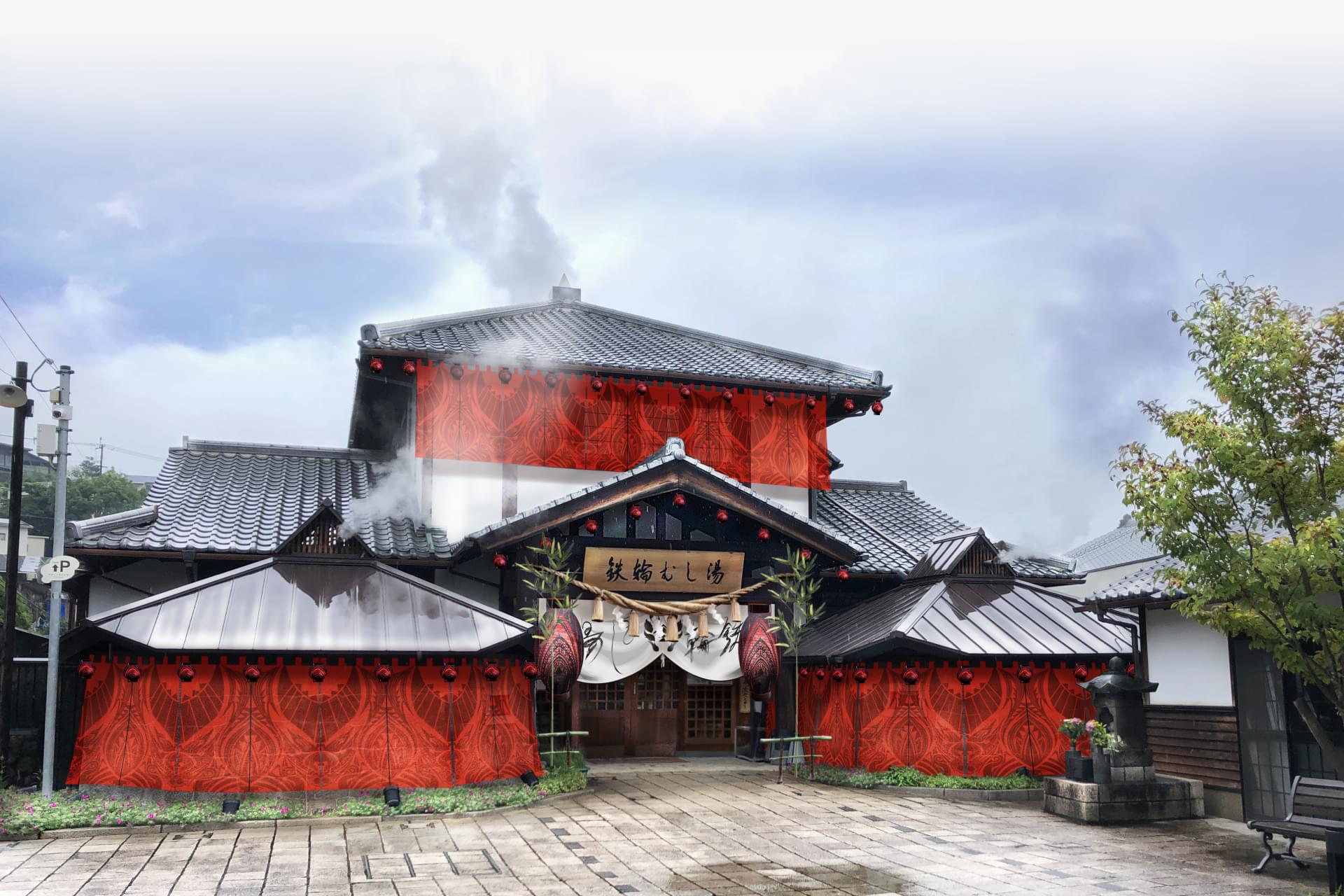
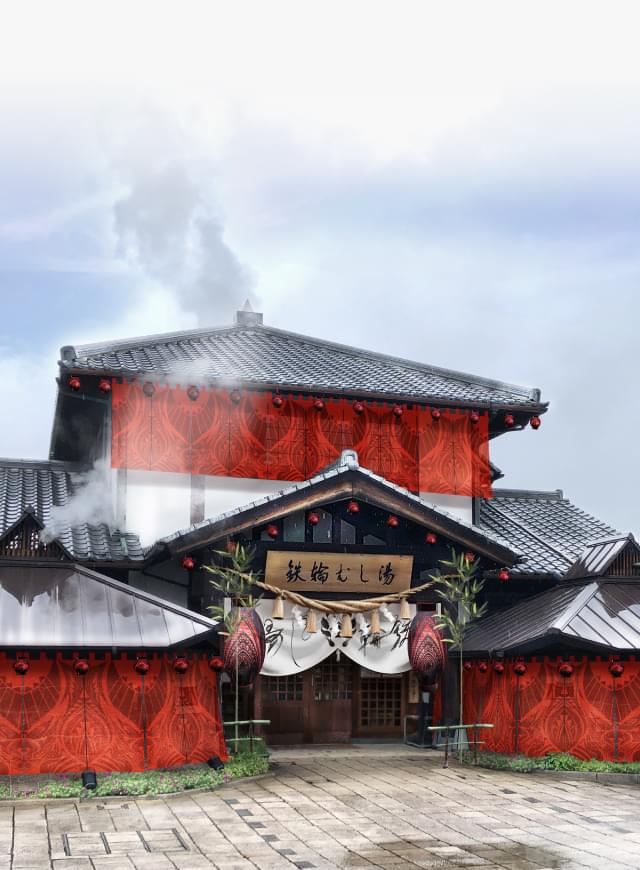
0 Tai
Tetsuya Umeda “0 Tai” Re-Open
“0 Tai” is the work that offers an experience to the audience by visiting various places in Beppu with the guide of the map and the voice overs heard from the radio terminal. Those touring spots includes geographical features and spaces unique to Beppu and the places that are normally off limits. In addition, a movie which are shot on those locations is shown at historical movie theater, Beppu Bluebird Theater. Moreover, this exhibition continuously changes as some works have emerged on the website and a same titled book has published.
CAST
Cinematographer: Yasutaka Watanabe
Sound engineer: Raku Nakahara
Photographer: Yuko Amano
Actors: Mirai Moriyama and Hikari Mitsushima
Lighting and physical effect: hyslom
Slate: Gentaro Fukano
Music arrangement: Manami Kakudo
Play: Beppu Shosei High School Brass Band
Costume, hair and makeup: beauty H
Technical: Taiki Niimi and Mitsuru Tokisato
Design: Calamari Inc.
Publisher: T&M Projects
Period: Sat, December 18, 2021 - Sun, February 13, 2022
Venues: Various locations in Beppu
Admission: Free *Reservation is required
Website: https://inbeppu.com/2020
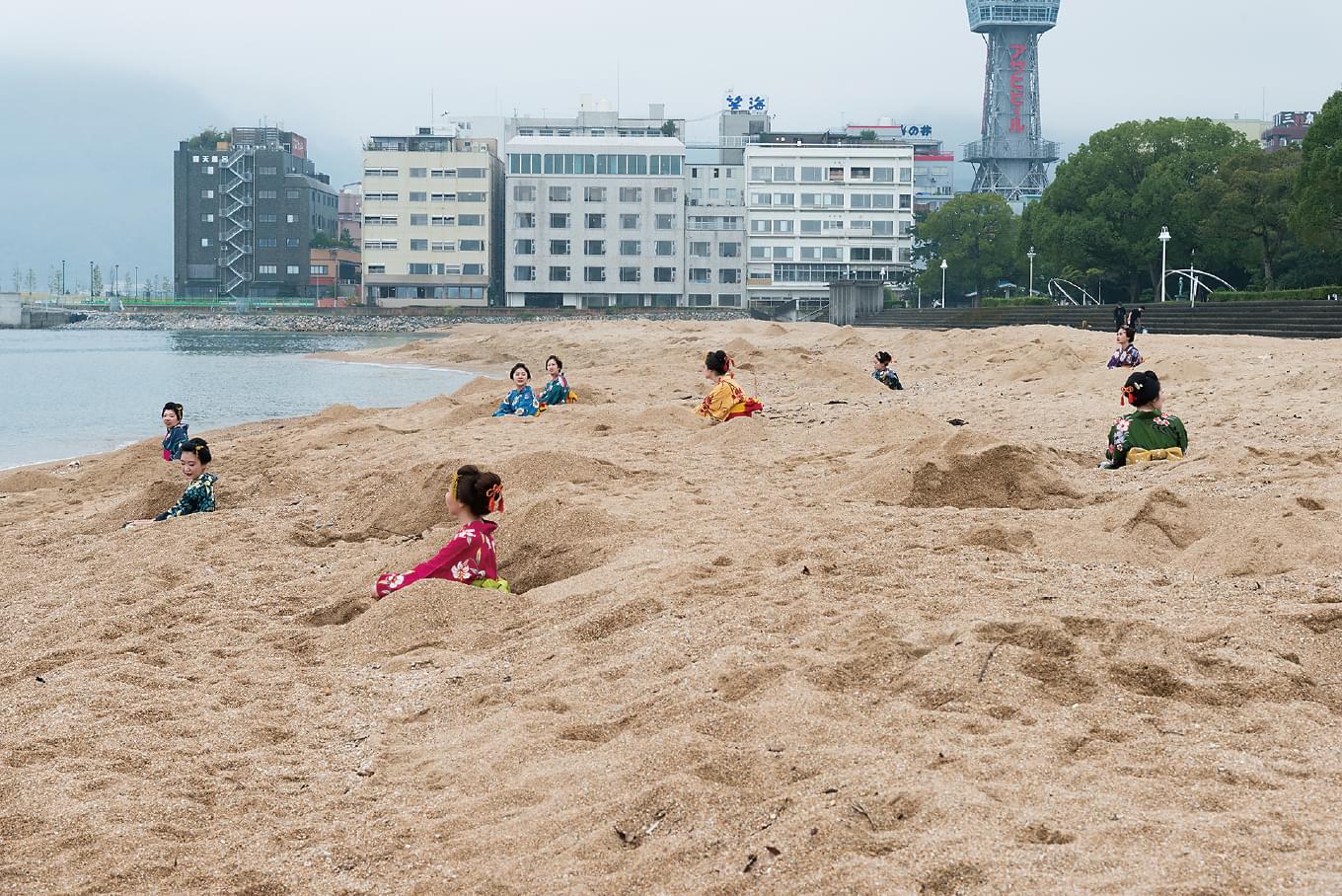 Photo by Yuko AMANO
Photo by Yuko AMANOCONTACT
CONTACT
Mixed Bathing World Executive Committee
Suga-kenzai Building 2F, 2-35 Noguchimotomachi, Beppu, Oita 874-0933, Japan
〈NPO BEPPU PROJECT〉TEL: +81-977-22-3560
FAX: +81-977-75-7012
MAIL: info@inbeppu.comOpen:Mondays - Fridays 9:00-18:00
*All published information is subject to change without notice. Please check online for further details and the latest information.
Information regarding coronavirus infection
The event will be carried out with proper precautions in place to prevent coronavirus infection.
We humbly request your understanding and cooperation as follows.
・Please carry a mask with you, and wear it when entering any indoor spaces.
・Please do not attend this event if you have a fever or are showing any cold-like symptoms.
・Other precautions will be put in place in compliance with guidance from the federal and local government. Please obey all signs posted within the event area as well as instructions from event staff.
協 賛
弁護士法人 アゴラ|大分県信用組合 別府支店|志村製材 有限会社|公益社団法人 ツーリズムおおいた|一般社団法人 別府市観光協会|南光物産 株式会社
協 力
大分太鼓堂|鉄輪むし湯|株式会社 共立メンテナンス|地獄蒸し工房 鉄輪|株式会社 血の池地獄|学校法人 日本教育財団 名古屋モード学園|香蘭ファッションデザイン専門学校|八幡朝見神社|別府浜脇子ども太鼓|火男火賣神社
後 援
別府市|大分県教育委員会|別府市教育委員会|公益社団法人 ツーリズムおおいた|別府商工会議所|一般社団法人 別府市観光協会|別府市旅館ホテル組合連合会|大分県民芸術文化祭実行委員会|NPO法人 大分県芸振|別府市商店街連合会|別府料飲協同組合|大分合同新聞社|朝日新聞 大分総局|毎日新聞社|読売新聞 西部本社|西日本新聞社|共同通信社|今日新聞社|OBS 大分放送|TOS テレビ大分|OAB 大分朝日放送|エフエム大分|CTBメディア|ゆふいんラヂオ局|月刊・シティ情報おおいた|ネキスト

(2021年12月6日現在)

